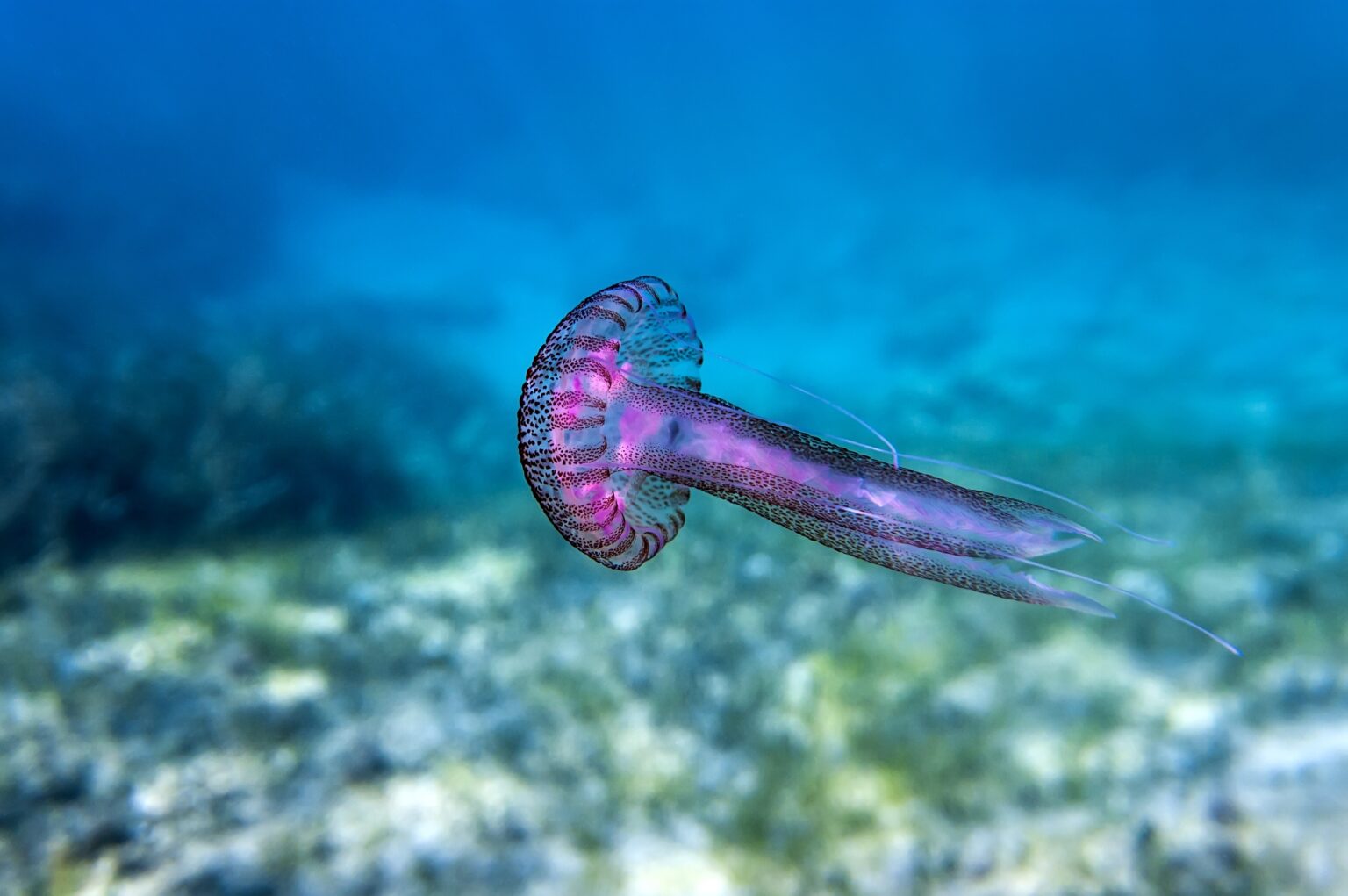Jellyfish Season in Qatar: Why It Happens
Every year, Qatar experiences a season when jellyfish appear in large numbers along its coastline. This phenomenon is caused by a combination of warmer water temperatures, ocean currents, and breeding cycles of the jellyfish. The peak season usually occurs between May and September, when the Gulf waters become warm, creating a perfect environment for jellyfish to thrive.
Jellyfish are marine creatures that have soft, gelatinous bodies and tentacles that can sting. While most species found in Qatar’s waters are not deadly, some can cause painful stings that may lead to discomfort, allergic reactions, or even medical emergencies in rare cases.
Common Jellyfish Found in Qatar’s Waters

There are several types of jellyfish that can be spotted in Qatar during the season. Some of the most common ones include:
- Moon Jellyfish (Aurelia aurita) – These jellyfish have a translucent, umbrella-shaped body with a slight purple or bluish tint. They are relatively harmless but can still cause mild irritation.
- Blue Blubber Jellyfish (Catostylus mosaicus) – These jellyfish have a striking blue or purple color. While their sting is not severe, it can cause irritation to sensitive skin.
- Lion’s Mane Jellyfish (Cyanea capillata) – This species has long tentacles and can deliver painful stings. It is one of the larger jellyfish species found in the region.
- Nomadic Jellyfish (Rhopilema nomadica) – This species is common in the Arabian Gulf and is known for its powerful sting, which can cause burning sensations and redness.
Where Jellyfish Are Commonly Found
Jellyfish are more commonly seen along Qatar’s beaches and shallow waters. Some of the areas where jellyfish sightings are frequent include:
- Katara Beach
- Al Wakrah Beach
- Sealine Beach
- Fuwairit Beach
- The Pearl-Qatar waterfront
Since jellyfish are carried by ocean currents, their presence on the shores can vary daily. Some days may have very few jellyfish, while others may see large numbers washing up on the beach.
How to Stay Safe During Jellyfish Season
Although most jellyfish stings in Qatar are not life-threatening, they can still cause pain, swelling, and irritation. Here are some important safety tips to follow during jellyfish season:
- Avoid swimming in areas with visible jellyfish. If you see jellyfish in the water or on the shore, it is best to stay out of the water.
- Wear protective clothing. Long-sleeved swimwear and water shoes can help minimize the risk of getting stung.
- Be cautious at night. Some jellyfish species become more active after sunset, making night swimming riskier.
- Carry vinegar or warm water. If you get stung, pouring vinegar or warm water over the affected area can help neutralize the sting.
- Do not touch stranded jellyfish. Even if a jellyfish appears to be dead on the beach, its tentacles can still sting if touched.
- Seek medical help if necessary. If a sting causes severe pain, difficulty breathing, or an allergic reaction, seek immediate medical attention.
What to Do If You Get Stung
If you or someone you know gets stung by a jellyfish, follow these steps:
- Get out of the water immediately.
- Rinse the area with vinegar (if available) or seawater. Do not use fresh water, as it can worsen the sting.
- Remove tentacles carefully. Use a pair of tweezers or wear gloves to avoid further stings.
- Soak the area in warm water (not hot) for about 20–40 minutes to reduce pain.
- Apply a pain reliever or antihistamine cream to reduce swelling and itching.
- Monitor for severe reactions. If symptoms worsen, seek medical attention immediately.
How Authorities Are Managing Jellyfish Season
The local authorities in Qatar, including the Ministry of Environment and Climate Change, regularly monitor jellyfish activity along the coastline. Beachgoers are often warned through local news, social media, and signs placed on affected beaches.
Some safety measures taken by the authorities include:
- Regular beach cleanups to remove stranded jellyfish.
- Public awareness campaigns to educate residents and visitors about jellyfish safety.
- Medical response teams stationed at popular beaches to assist with jellyfish stings.
The Ecological Role of Jellyfish
While jellyfish can be a nuisance to swimmers, they play an important role in the marine ecosystem. They serve as food for many marine animals, including sea turtles, which rely on them as a primary food source. Jellyfish also help control populations of small fish and plankton, maintaining a balance in the ocean’s ecosystem.
How Climate Change Affects Jellyfish Populations
Scientists believe that climate change and human activities are contributing to an increase in jellyfish populations worldwide. Rising sea temperatures, overfishing of jellyfish predators (such as sea turtles and certain fish species), and pollution have created conditions that allow jellyfish to thrive.
In the Arabian Gulf, warm waters and pollution from industrial activities may be influencing the frequency and intensity of jellyfish blooms. Some marine biologists are studying ways to manage jellyfish populations to prevent negative impacts on local tourism and fishing industries.
Fun Facts About Jellyfish
- Jellyfish are one of the oldest living creatures on Earth, existing for over 500 million years.
- They do not have brains, hearts, or bones, but they can still sense their surroundings.
- Some jellyfish are bioluminescent, meaning they can glow in the dark.
- The smallest jellyfish is the size of a grain of sand, while the largest can have tentacles over 100 feet long.
Final Thoughts
Jellyfish season in Qatar is a natural occurrence that happens every year. While these creatures can be a hazard to swimmers, understanding their behavior and taking precautions can help people stay safe. Local authorities and marine experts continue to study jellyfish populations to ensure that they do not negatively impact Qatar’s beautiful coastal environment.
Do follow on Instagram



